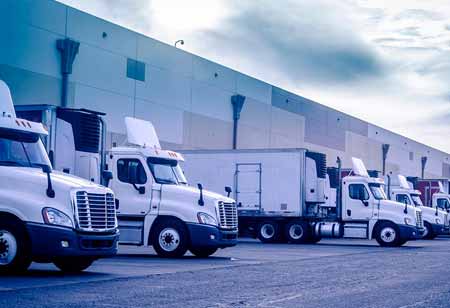THANK YOU FOR SUBSCRIBING
THANK YOU FOR SUBSCRIBING

By
Logistics Transportation Review | Thursday, May 25, 2023
Stay ahead of the industry with exclusive feature stories on the top companies, expert insights and the latest news delivered straight to your inbox. Subscribe today.
A cold chain logistics is a group of activities that securely handle and transport perishable items from the manufacturer or supplier to the consumer.
Fremont, CA: A cold supply chain copes with perishable, temperature-sensitive goods (cool cargo) such as fresh produce, meat, dairy, seafood, chemicals, pharmaceuticals, flowers, wine, etc.
Generally, a distinct low-temperature range must be managed to confirm the quality and virtue of perishable goods, i.e.; some products must be refrigerated; some must be frozen, while others need extreme conditions like ultralow chain or deep freeze. Failure to keep the right temperature drives product spoilage and financial losses.
A cold chain logistics is a group of activities to handle and transport such items from the manufacturer or supplier to the consumer.
Use cases Of Cold chain logistics.
Many industries, comprising agriculture, manufacturing, and healthcare, mightily depend on cold chain logistics to store securely and transport perishables. Nowadays, the requirement for such services keeps growing because of varying consumer demand, trends like “from farm to fork,” and new drug and vaccine requirements.
1. Cold chain in the food industry
Keeping and transporting perishable food products is the ancient and most apparent cold chain use case, arising centuries ago to avoid rot or mold. We all know that the quality of specific food categories deteriorates with time due to natural chemical reactions – reactions that can be delayed with minimum temperatures.
2. Cold Chain in Pharmaceutics
The requirement for cold chain logistics services in pharma has developed consistently over the last few years. Blood, stem cells, tissues, transplant organs, diverse drugs, and vaccines – all these items require a range of 2° to 8°C and sometimes lower to -80°C. If the needed temperature level is not kept, such products can become useless or harmful to patients.
If pharma goods must be shipped promptly, they are transported by air. Still, if time is unimportant, ocean transportation is favored as it’s cheaper and safer (i.e., less subject to temperature violation).
Unlike the food industry, there is a greater demand for packaging options and containers to keep ultra-low temperatures.
3. Cold chain digital technology
Most temperature-sensitive products are also time-sensitive; despite proper storage conditions, they must be transported without delays.
Therefore, all stakeholders want to track such vulnerable cargo and constantly monitor its condition to be aware of what’s happening and react fast in case of any deviations. And that’s what the latest digital technology can support.
4. Cold chain equipment and packaging options
Usually, reefer trailers, diverse containers, and specialized vessels transport temperature-sensitive products. Liquefied gasses are stored and transported in cryogenic tanks, trailers, and railcars.
Simultaneously, for storage intentions, warehouse/terminal facilities, and distribution centers are fitted with capacious walk-in coolers and refrigerators that manage a stable temperature. A great variety of laboratory refrigerators and freezers are qualified to support the required temperature to store pharmaceuticals, tissue samples, drugs, and other medical things.
As for packaging, there’s a vast range of cooling products to maintain perishables cold. There are two major categories of such technologies.
1. Passive cold containers depend on dry ice, liquid nitrogen, eutectic plates, quilts, gel packs, gel bottles, and other cooling/auxiliary stuff to maintain the internal temperature low. Pharma products can be more selective and need ultra-low freezing, so specialized containers are designed to fulfill industry requirements.
2. Active cool containers can watch and control the internal temperature level. Such powered refrigeration units comprise sensors, a control unit, and ventilators that adapt to the temperature automatically to maintain stability.
Active containers seem pricey at first compared to the two, but they often provide more cost savings than conventional passive ones. They are reusable, take less space, need less management, don’t require cooling material substituting, provide better-guaranteed temperature management, and can be shipped with other cargo or as LTL freight.
I agree We use cookies on this website to enhance your user experience. By clicking any link on this page you are giving your consent for us to set cookies. More info





